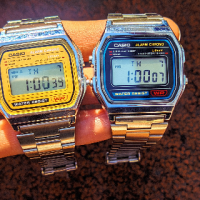Copyright (c) 2002-2004 Stephan Meyer, <ste_meyer@web.de>
Copyright (c) 2000-2004 Johannes Erdfelt, <johannes@erdfelt.com>
Copyright (c) 2000-2004 Thomas Sailer, <sailer@ife.ee.ethz.ch>
Copyright (c) 2010 Travis Robinson, <libusbdotnet@gmail.com>
This software is distributed under the following licenses:
Driver: GNU General Public License (GPL)
Library, Test Files, Installer: GNU Lesser General Public License (LGPL)
***********************************************************************
GNU GENERAL PUBLIC LICENSE
Version 3, 29 June 2007
Copyright (C) 2007 Free Software Foundation, Inc. <http://fsf.org/>
Everyone is permitted to copy and distribute verbatim copies
of this license document, but changing it is not allowed.
Preamble
The GNU General Public License is a free, copyleft license for
software and other kinds of works.
The licenses for most software and other practical works are designed
to take away your freedom to share and change the works. By contrast,
the GNU General Public License is intended to guarantee your freedom to
share and change all versions of a program--to make sure it remains free
software for all its users. We, the Free Software Foundation, use the
GNU General Public License for most of our software; it applies also to
any other work released this way by its authors. You can apply it to
your programs, too.
When we speak of free software, we are referring to freedom, not
price. Our General Public Licenses are designed to make sure that you
have the freedom to distribute copies of free software (and charge for
them if you wish), that you receive source code or can get it if you
want it, that you can change the software or use pieces of it in new
free programs, and that you know you can do these things.
To protect your rights, we need to prevent others from denying you
these rights or asking you to surrender the rights. Therefore, you have
certain responsibilities if you distribute copies of the software, or if
you modify it: responsibilities to respect the freedom of others.
For example, if you distribute copies of such a program, whether
gratis or for a fee, you must pass on to the recipients the same
freedoms that you received. You must make sure that they, too, receive
or can get the source code. And you must show them these terms so they
know their rights.
Developers that use the GNU GPL protect your rights with two steps:
(1) assert copyright on the software, and (2) offer you this License
giving you legal permission to copy, distribute and/or modify it.
For the developers' and authors' protection, the GPL clearly explains
that there is no warranty for this free software. For both users' and
authors' sake, the GPL requires that modified versions be marked as
changed, so that their problems will not be attributed erroneously to
authors of previous versions.
Some devices are designed to deny users access to install or run
modified versions of the software inside them, although the manufacturer
can do so. This is fundamentally incompatible with the aim of
protecting users' freedom to change the software. The systematic
pattern of such abuse occurs in the area of products for individuals to
use, which is precisely where it is most unacceptable. Therefore, we
have designed this version of the GPL to prohibit the practice for those
products. If such problems arise substantially in other domains, we
stand ready to extend this provision to those domains in future versions
of the GPL, as needed to protect the freedom of users.
Finally, every program is threatened constantly by software patents.
States should not allow patents to restrict development and use of
software on general-purpose computers, but in those that do, we wish to
avoid the special danger that patents applied to a free program could
make it effectively proprietary. To prevent this, the GPL assures that
patents cannot be used to render the program non-free.
The precise terms and conditions for copying, distribution and
modification follow.
TERMS AND CONDITIONS
0. Definitions.
"This License" refers to version 3 of the GNU General Public License.
"Copyright" also means copyright-like laws that apply to other kinds of
works, such as semiconductor masks.
"The Program" refers to any copyrightable work licensed under this
License. Each licensee is addressed as "you". "Licensees" and
"recipients" may be individuals or organizations.
To "modify" a work means to copy from or adapt all or part of the work
in a fashion requiring copyright permission, other than the making of an
exact copy. The resulting work is called a "modified version" of the
earlier work or a work "based on" the earlier work.
A "covered work" means either the unmodified Program or a work based
on the Program.
To "propagate" a work means to do anything with it that, without
permission, would make you directly or secondarily liable for
infringement under applicable copyright law, except executing it on a
computer or modifying a private copy. Propagation includes copying,
distribution (with or without modification), making available to the
public, and in some countries other activities as well.
To "convey" a work means any kind of propagation that enables other
parties to make or receive copies. Mere interaction with a user through
a computer network, with no transfer of a copy, is not conveying.
An interactive user interface displays "Appropriate Legal Notices"
to the extent that it includes a convenient and prominently visible
feature that (1) displays an appropriate copyright notice, and (2)
tells the user that there is no warranty for the work (except to the
extent that warranties are provided), that licensees may convey the
work under this License, and how to view a copy of this License. If
the interface presents a list of user commands or options, such as a
menu, a prominent item in the list meets this criterion.
1. Source Code.
The "source code" for a work means the preferred form of the work
for making modifications to it. "Object code" means any non-source
form of a work.
A "Standard Interface" means an interface that either is an official
standard defined by a recognized standards body, or, in the case of
interfaces specified for a particular programming language, one that
is widely used among developers working in that language.
The "System Libraries" of an executable work include anything, other
than the work as a whole, that (a) is included in the normal form of
packaging a Major Component, but which is not part of that Major
Component, and (b) serves only to enable use of the work with that
Major Component, or to implement a Standard Interface for which an
implementation is available to the public in source code form. A
"Major Component", in this context, means a major essential component
(kernel, window system, and so on) of the specific operating system
(if any) on which the executable work runs, or a compiler used to
produce the work, or an object code interpreter used to run it.
The "Corresponding Source" for a work in object code form means all
the source code needed to generate, install, and (for an executable
work) run the object code and to modify the work, including scripts to
control those activities. However, it does not include the work's
System Libraries, or general-purpose tools or generally available free
programs which are used unmodified in performing those activities but
which are not part of the work. For example, Corresponding Source
includes interface definition files associated with source files for
the work, and the source code for shared libraries and dynamically
linked subprograms that the work is specifically designed

A澄澄科技!
- 粉丝: 374
- 资源: 2
最新资源
- 电动汽车空调制冷系统电动压缩机匹配分析1.pdf
- 二氧化碳汽车空调系统设计及研究1.pdf
- 电动汽车驱动系统散热设计与试验验证.pdf
- McQuayDuctSizer(麦克维尔风管尺寸计算软件).zip
- 麦克维尔温湿度分析仪McQuayPsychrometricAnalyzer(hvac-eng.com).zip
- 麦克维尔管道测量仪McQuaypipesizer .zip
- 信捷XC系列PLC主从通讯程序
- 基于蒙特卡洛的电动汽车充电负荷生成
- 基于遗传算法的电动汽车有序充电优化调度 软件:Matlab 利用遗传算法对电动汽车有序充电进行优化;优化目标包括充电费用最低,充电时间达到要求(电动汽车充到足够的电)考虑电动汽车充电对电网负荷的影响
- FPGA 全部verilog代码实现I2C口master端口应用场景 1、FPGA通过I2C口配置TFP410MP 2、EDID配置,FPGA通过I2C口配置AT24C02 AT24C64; 访问地
- Matlab simulink 基于光伏和蓄电池的三端口
- FFT STM32+apFFT程序源代码+lunwen资料+教程讲解 适用于STM32F103平台,使用AD7606同步采集两路正弦信号,内置1024点全相位快速傅里叶变(apFFT)算法,直接计算
- 两电平svpwm算法verilog程序
- 基于改进的快速粒子群有源配电网动态无功优化 软件:Matlab 介绍:在含分布式电源的IEEE33进行无功优化,以无功最优和运行费用最优为目标函数进行优化,采用改进的快速粒子群算法进行计算
- 混合型APF,HAPF,电力牵引系统电能质量控制,高铁谐波补偿,高铁无功补偿,混合型有源电力滤波器,单相SVG,SVG,电力牵引系统谐波无功补偿
- 单机无穷大系统静态稳定性仿真模型
资源上传下载、课程学习等过程中有任何疑问或建议,欢迎提出宝贵意见哦~我们会及时处理!
点击此处反馈




















